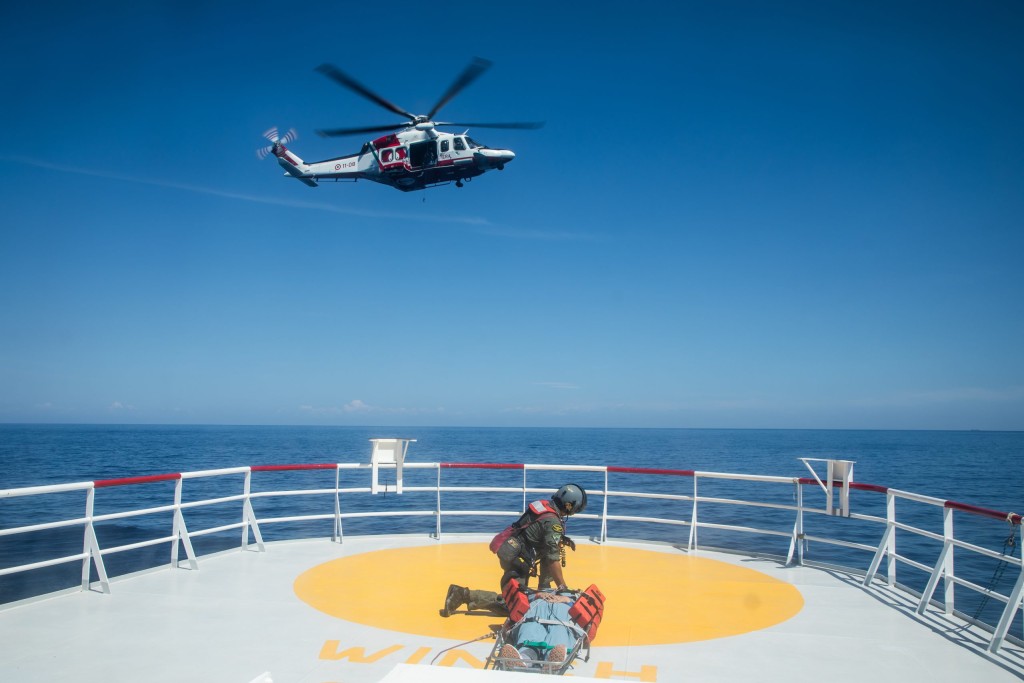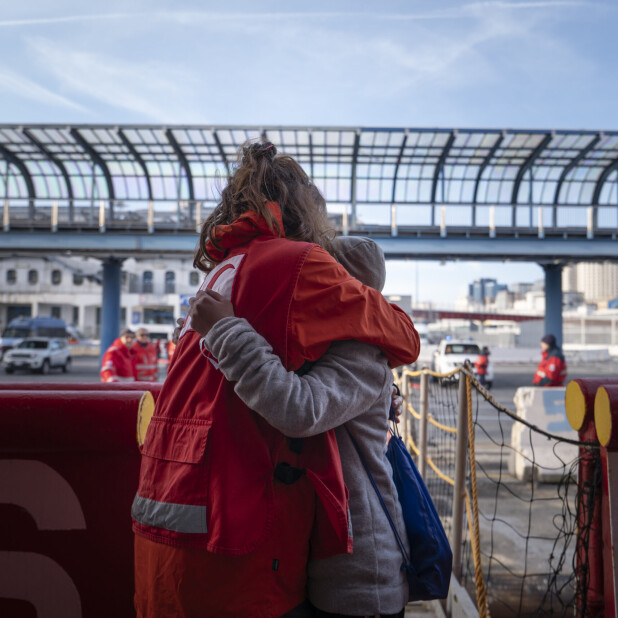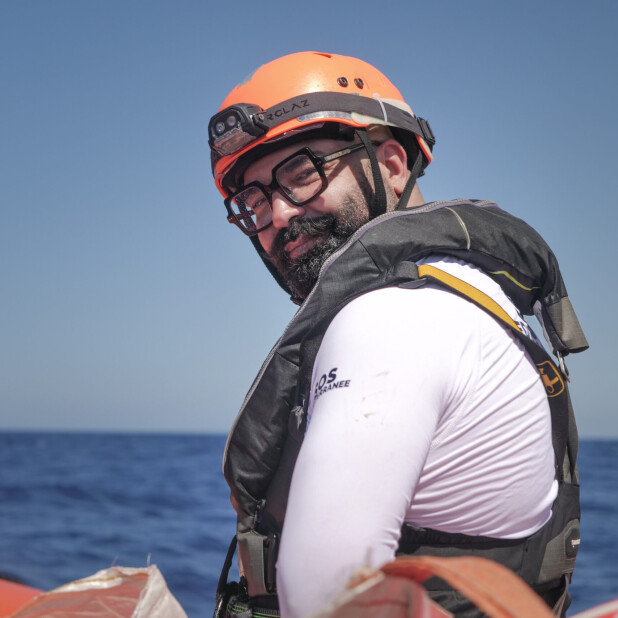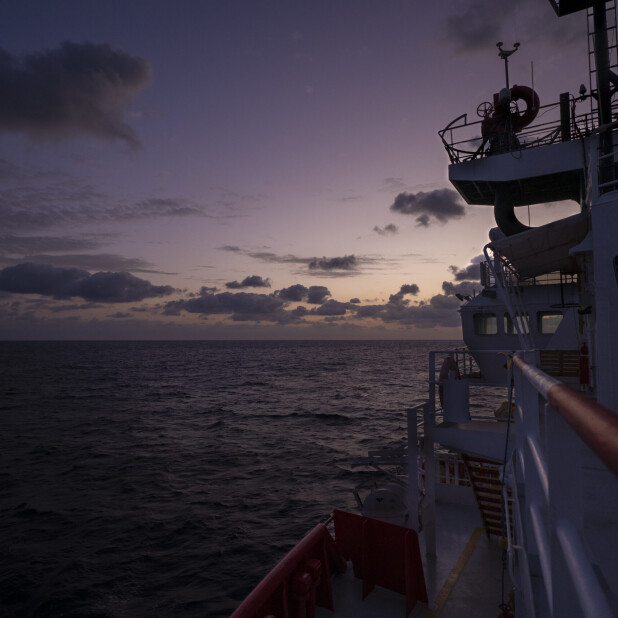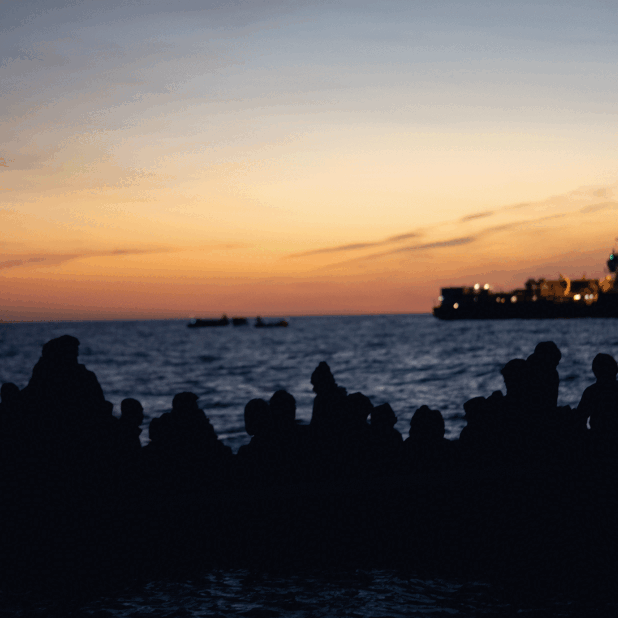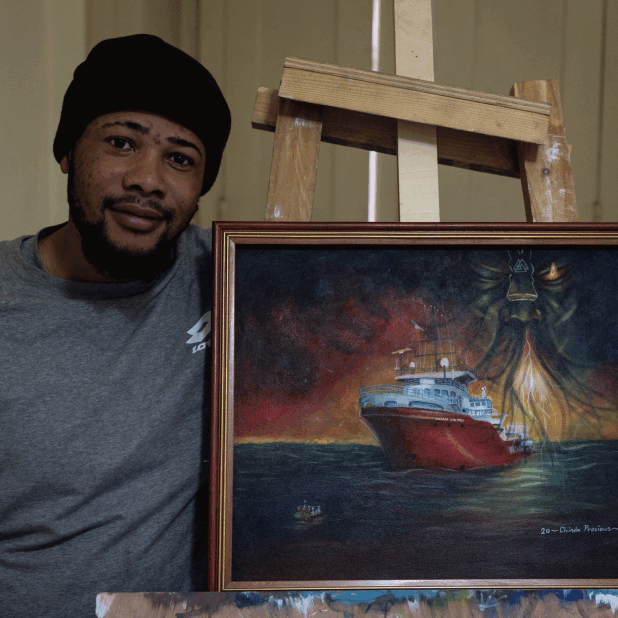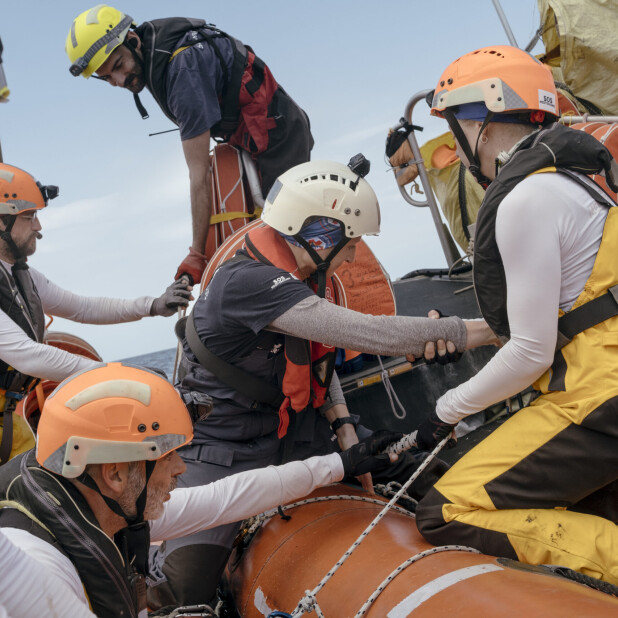
The clinic of the Ocean Viking is one of the most important area of the Main deck of the ship. In 2022, over 2,400 medical consultations were conducted so far. The medical team is composed of four specialists: a doctor, a midwife, a nurse and a medical team leader (who is also a doctor, nurse or midwife). After over three years of use and hindsight onboard the Ocean Viking, Dominika Wanczyk, medical manager for SOS MEDITERRANEE, explains works that are planned in the clinic to improve the level of care provided to survivors and the main medical needs observed among the women, children and men rescued in the central Mediterranean.
What are the works planned in the Ocean Viking’s clinic and why?
The main improvement works planned to be done in the clinic are the addition of extra showers to increase the capacity and avoid queuing of survivors who need to have access to fuel showers in the first place. Due to the extended time spent at sea by survivors before being disembarked in a place of safety, it’s also crucial to increase the capacity of showers for daily hygiene. New panels will be installed in the showers and the midwife room after excessive use. A refit of the flooring has to be made to replace materials that suffered from erosion due to sea water. Finally, air conditioning will be improved to face better extreme heat as we experienced last summer and to protect our medication stock onboard.
Can you explain the setup of the clinic on the Ocean Viking? Are there any differences between a normal health facility on land and a clinic on a rescue ship?
The medical module is made of a series of containers that are watertight. In this space, we have a consultation and emergency area and an observation area where we can keep people overnight, monitor and give them the treatment that they need. We also have a midwife clinic where the midwife onboard can conduct consultations with the women in a private and safe space.
What makes our space different from a normal health facility on land is that things are moving all the time. As the ship can be rolling, especially in the winter months, everything needs to be strapped down and locked in. This also impacts how we maneuver around the ship. For example, at the start of each mission we conduct a lot of trainings with stretchers to practice how we move patients in these challenging spaces.
We are quite similar to an ambulance in that we carry basic emergency equipment and medication, but of Course there is a limitation to what we are in capacity to do on board. We are not a hospital, we don’t have surgical services and specialized medicine. If there is an urgent medical case or faced with a condition we cannot treat on board, we rely on being able to medically evacuate the patients to the nearest hospital, which requires either a helideck or a transfer to a patrol vessel.
Since we experience prolonged blockages in the designation of a place of safety to disembark survivors since 2018, we are also equipped to treat a lot of chronic conditions and provide more comprehensive care than an ambulance would. As we are subject to the weather conditions and sea states, sometimes the whole deck becomes a treatment space because people often get seasick and catch colds, especially in winter times. In the summer months, we are faced with the challenges of the heat, the sun and exposure. Therefore, we are not only doing consultations in the medical module but also looking out for anyone on deck at the time.
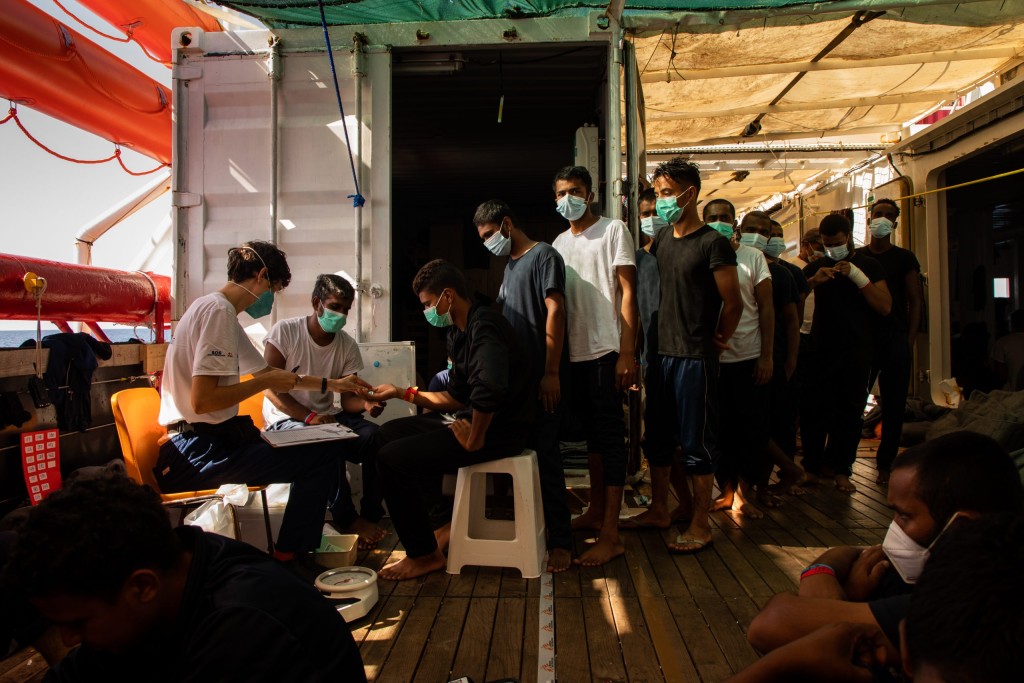
Credits: Tara Lambourne / SOS MEDITERRANEE
What kind of medical care do you provide on the Ocean Viking?
The medical team on the Ocean Viking has to be ready to respond to emergencies at all times. Generally, these emergencies are related either to people’s time at sea – such as drownings, dehydration or maybe crush injuries from the overcrowded boats – or to what they went through before they embarked: such as trauma or violence-related injury from their time in their country of origin, on their migration journey and/or in Libya, where they often don’t receive treatment or don’t have access to care.
During the evacuation phase of people found on boats in distress, we try to get a first report from the search and rescue team that is conducting the operation to find out if anyone is unconscious and not breathing. Then, once people are brought to the Ocean Viking, the medical team conducts a triage. At that stage, our objective is to identify people who might not be able to walk or talk, who might be disorientated or confused and identify potential visible injuries.
We are also concerned when we can smell fuel. When fuel leaks into the unseaworthy boats and mixes with salt water, it causes a terrible chemical burn. If we can smell fuel and people can wash it off right away and get treatment for it immediately, then we have a chance to prevent some severe burns.
Once people are settled on board, they have the possibility to present to the medical module for consultations. The medical team members are also often out on the deck, speaking to people, assessing if anyone has any needs or concerns. Oftentimes, we see a lot of skin infections and a lot of bad wounds, and this is generally related to prior living conditions with inadequate sanitation and lack of access to hygiene care, especially in the detention centers in Libya.
People with chronic conditions often haven’t had access to healthcare and to their medications in a long time. It is common that their illness has been exacerbated. In those cases, we try to provide them with the necessary treatment and to refer them to a clinic on land.
The midwife on board is responsible for the women and children. She screens for pregnancy, and when we do have a pregnant woman on board, the consultation on board will often her first antenatal care visit and checkup. The midwife also does baby checks.
As we know that sexual violence is something that unfortunately happens very commonly along people’s journeys and especially in Libya, we provide medical care in response to this. We let people know that these services exist on board and that we have treatment.
Because of how difficult people’s journeys are, as anyone can imagine, this has a big impact on mental health. To respond to this, not only the medical team but the whole crew is trained in psychological first aid. Psychological first aid is a way to respond to someone who might be in distress in a non-intrusive way. We listen, we try to comfort the person, and if there are more severe mental health needs then we refer them to medics on land for more support.
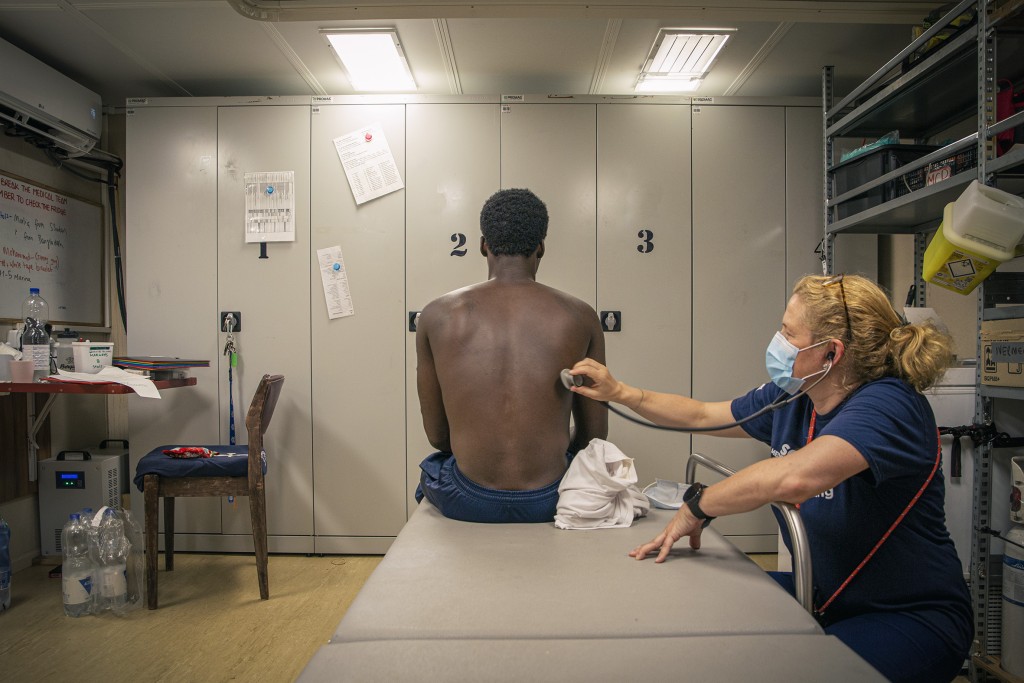
Credits: Anthony Jean / SOS MEDITERRANEE
Does the medical team ever get overwhelmed by the medical needs onboard and what would happen in such a situation?
As our medical team on board consists of only four people, we have what we call a “mass casualty plan” in place. This is actually something that all health facilities have, those on land as well. If, for example, there was a critical rescue with people in the water or other scenarios where the medical team would need additional support, then we reorganize how we work, both in terms of space and in terms of team support.
We set up all our emergency equipment in a larger space on deck to build a kind of emergency clinic and we ask for all-hands-on deck. At the beginning of each rotation, we train all of the crew in basic life support. This allows the medical team to ask any present team member to support with chest compressions , observe a patient or help document vital signs.
We would also, of Course, call relevant maritime authorities for help and ask for the medical evacuation of any urgent cases to be taken to the nearest hospital.
